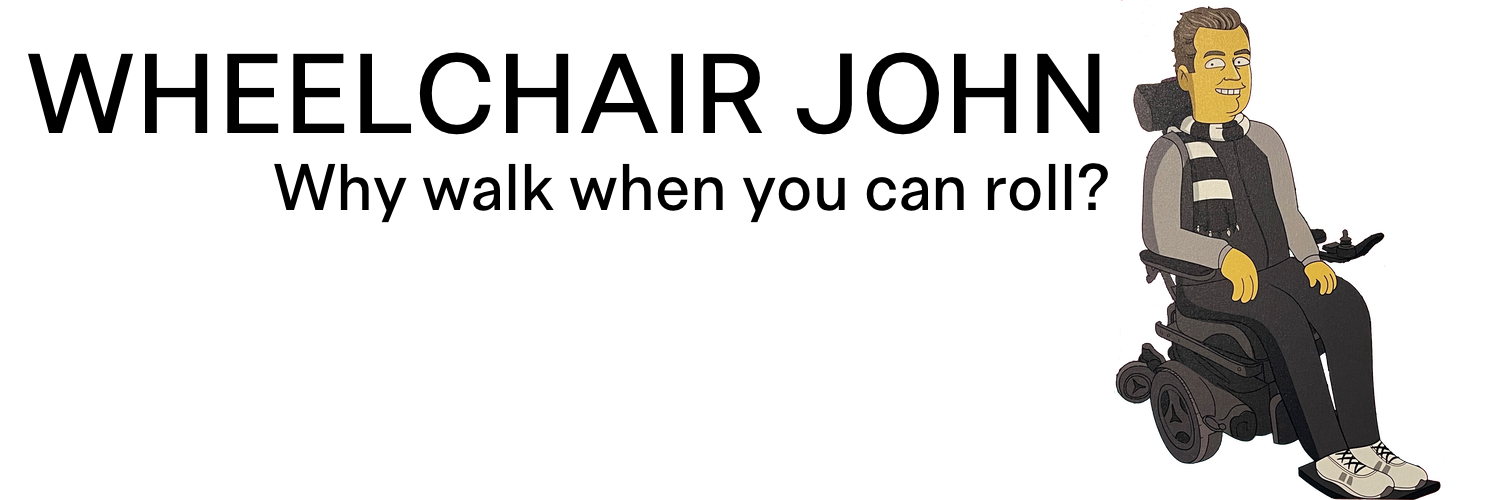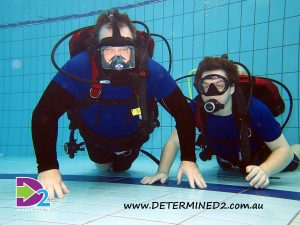What is Immersion Therapy?
It is difficult to exercise when you are paralysed from the chest down, but not impossible. Once a week I attend Immersion Therapy with Determined2 at the Adelaide Aquatic Centre. Immersion therapy is “a world first way in which people with injury or disability can have access to movement and benefits like never before”. I’ve attended the service for 18 months, and it has improved my physical and mental health
What is involved?
Madie arrives at my house and we jump into my VW transporter and drive to the pool at North Adelaide. Pete Wilson, owner and creator of immersion therapy, gives us high fives. The whole team is happy and friendly, and I put on a Lavacore top, which helps me stay warm in the pool. My spinal injury makes it more difficult to regulate my body temperature. Madie helps me put the Lavacore top on, and then I jump across to the pool lifter from the powered chair. The lifter swivels around, and I descend into the water and slide off the seat and into the water. The Lavacore top adds buoyancy, and I swim to the scuba gear, already prepared by Jess, Brendan, John or Pete. Note: Immersion Therapy™ is not scuba diving, and I’ve heard this a few times by Pete.
Getting into the pool
I am handed a mask, and attach it tightly, to keep the water out of my eyes and nose. The scuba pack straps to my body and the mouthpiece goes in my mouth (obviously!). Swimming gloves provide a web between the fingers and help me move faster in the water, giving my body a good workout. Most of the participants frolic around and take it easy. However, I swim as many laps underwater as possible, albeit quite slowly. The current lap record is 30, which is 750 metres.
I find the first ten laps difficult due to pain in my arms, and once I warm up, the next 20 laps are more comfortable. Halfway through the swim, I get a little dizzy, not from a lack of oxygen, nor from the exercise, however from watching the tiles pass my eyes. I try to focus on other items. During the therapy the staff members keep an eye on me, to ensure my safety, and I’ve never had a problem.
Getting out of the pool
Once I complete my 30 laps, the scuba gear comes off, and Madie winds me out of the water via the lifter and pours a bucket of warm water over my head and body. The warm water removes most of the chlorine smell, and then Madie gives me a towel and helps me to get drier, but not dry. The top and shoes are put on, and pants and jacket during winter. I drive home and jump into bed, get my wet pants off, and dry myself.
The method we use is much quicker than using the accessible changing equipment at the pool. I estimate we take around a third of the time.
I am exhausted. The 30 laps of immersion therapy is the only exercise that drains me physically and mentally. It feels great to have exercised so hard. I recommend immersion therapy to anyone with a disability. Choose to relax and swim around or challenge me to a race 🙂
Read about the pressure sore that kept me out of the pool for three months.


Good on you John and thanks for sharing. I am also a D2 client in Port Lincoln and have found this very beneficial. I have started swimming a little but am motivated to do more now, after hearing your story 🙂
Absolutely brilliant John thankyou for bringing awareness to not only our newly registered D2 community but anyone that may be in similar circumstances and is looking for freedom your profile highlighting a can do attitude helps bring the concept and endless possabilities Determined2 offers to each and every participant that joins our family its a privilege to volunteer with the Port Lincoln crew with my son kye who has Autism Spectrum Disorder and “lives” for this programme (no brainer there)
All the sensory regulation visual communication and bubble play under the water is a win win for anyone on the Autism spectrum. Keep going and build your pathways everyone you are strong confident participants and we beleive in you x